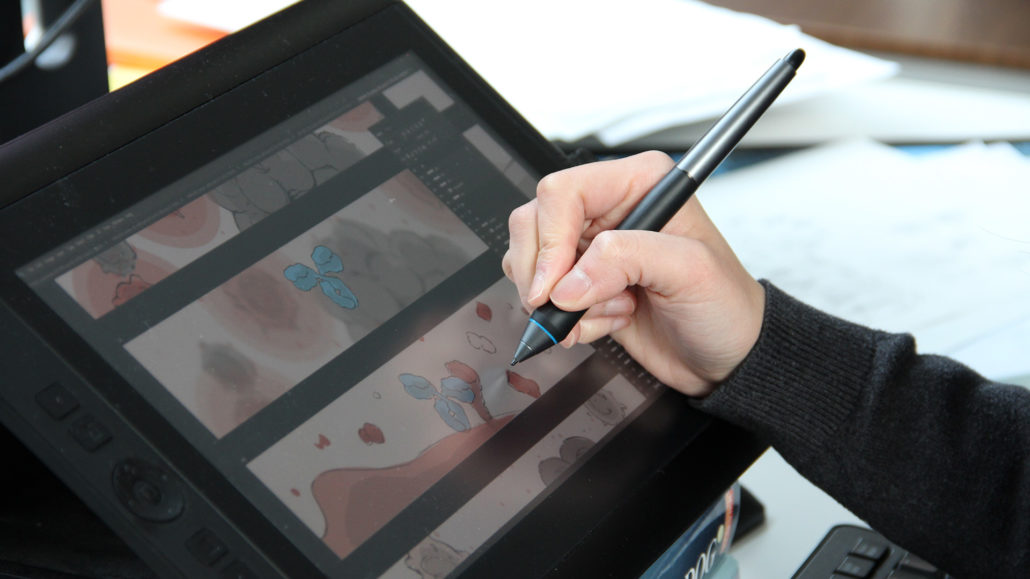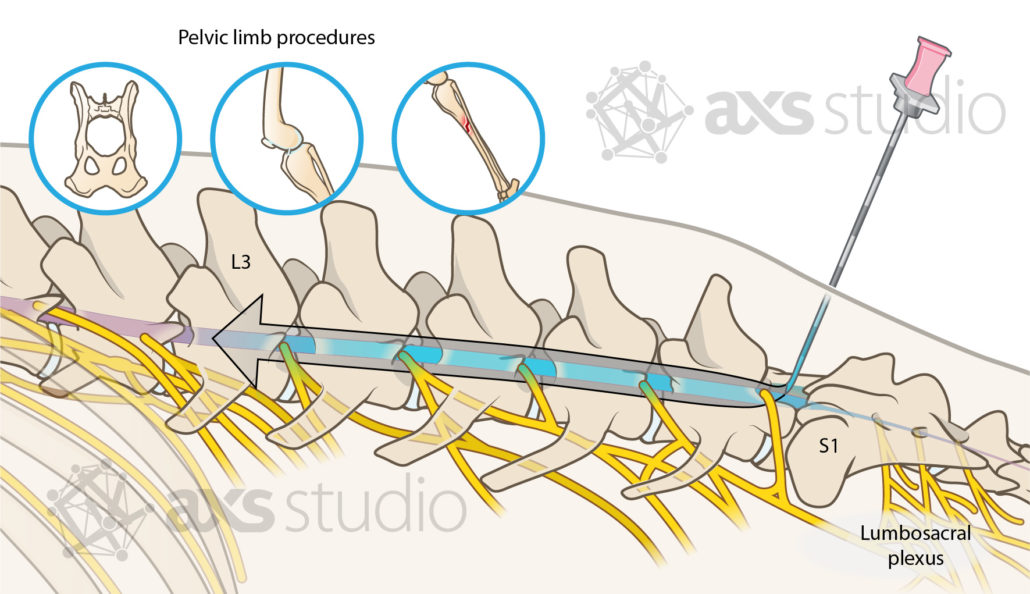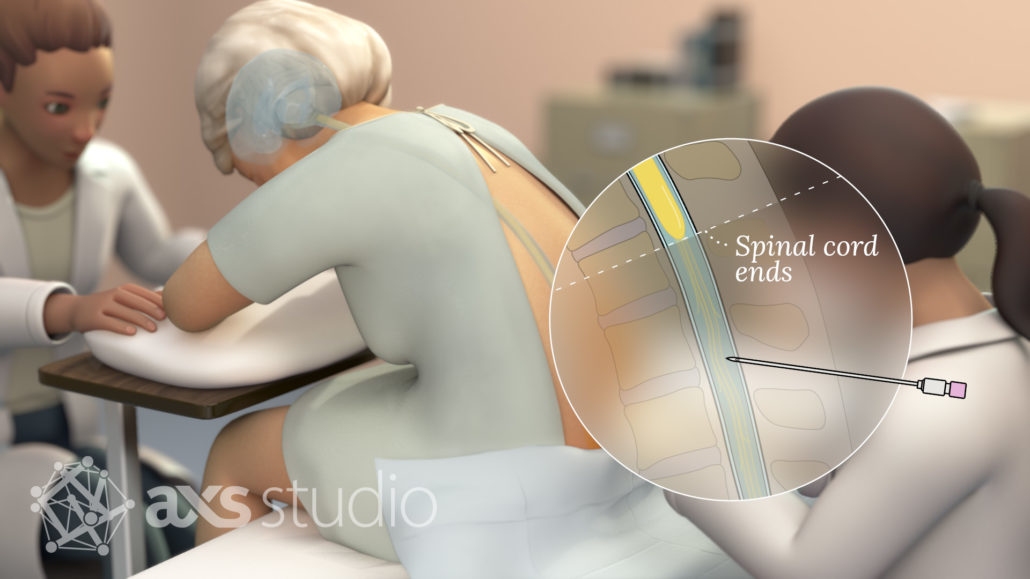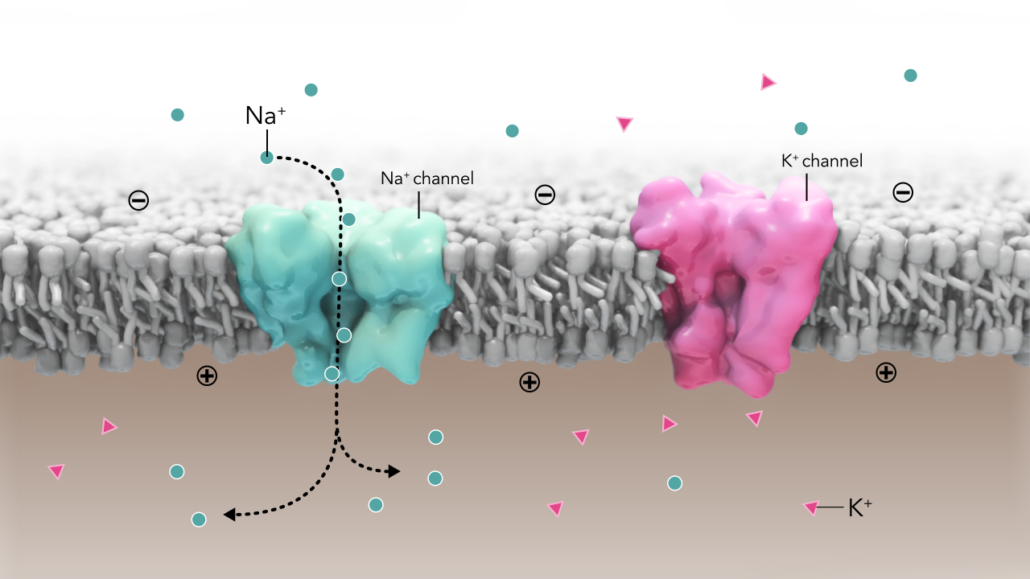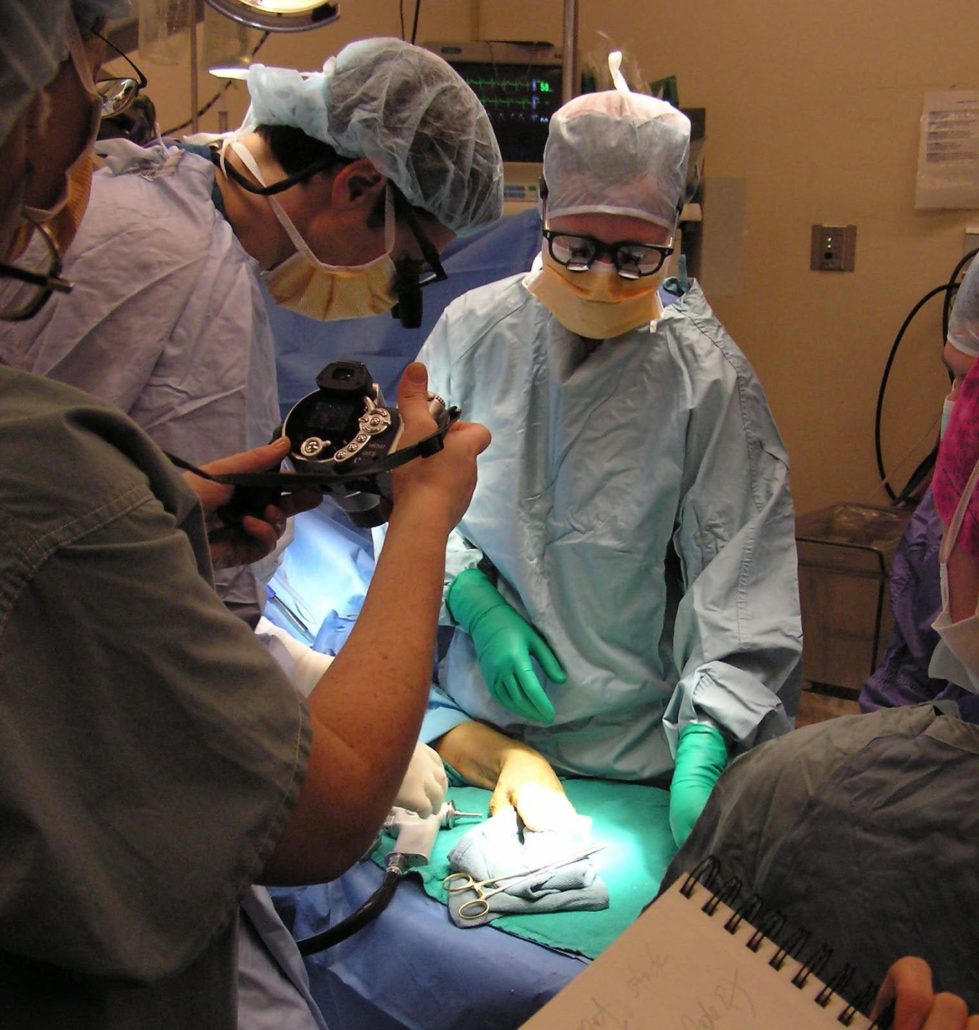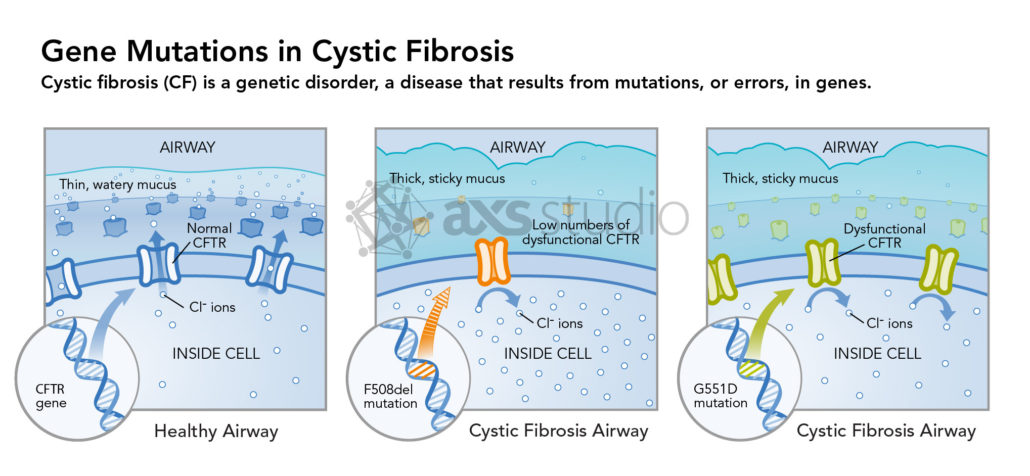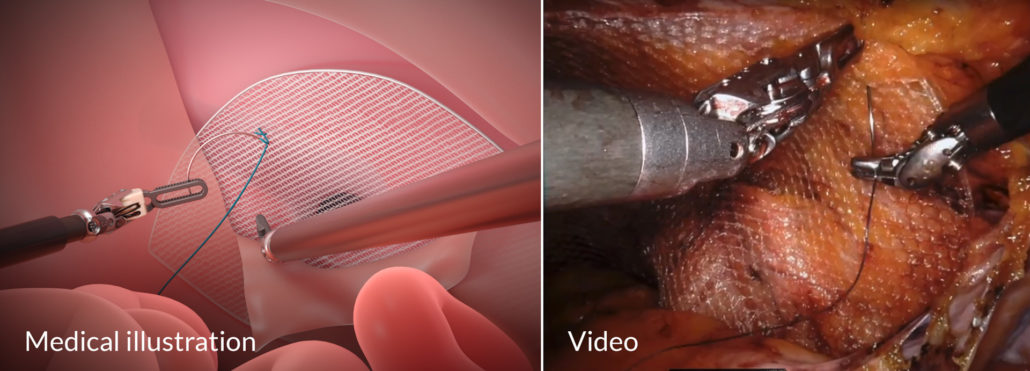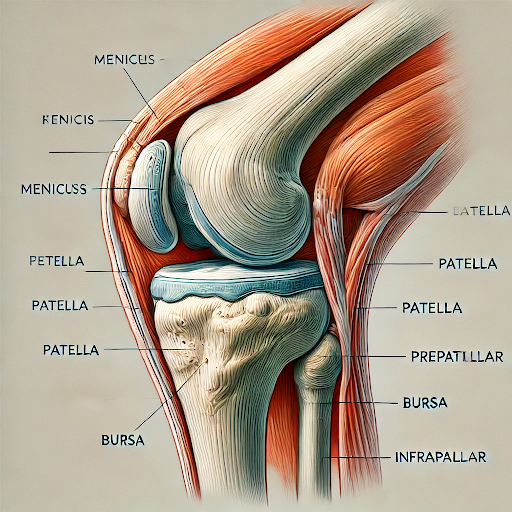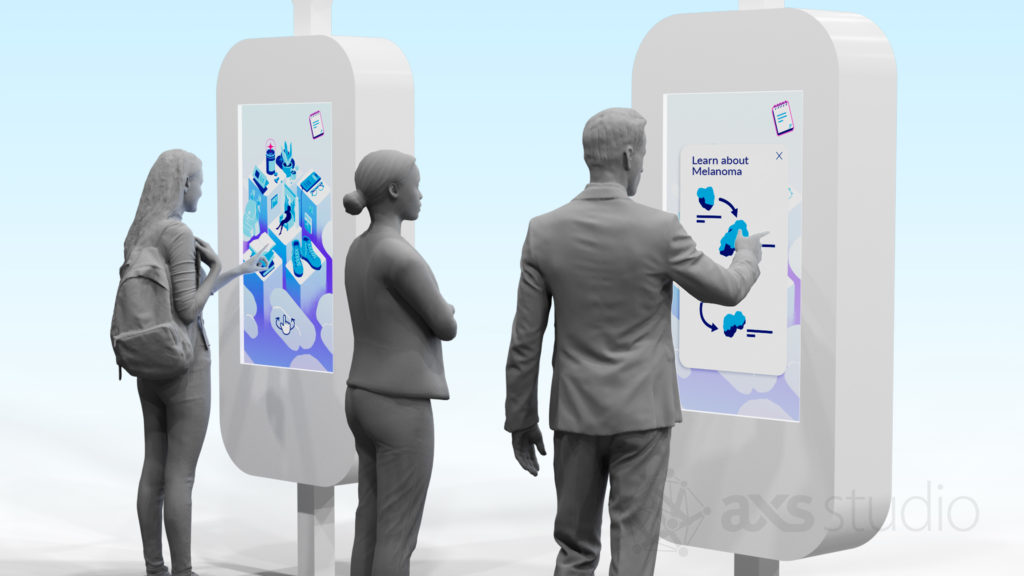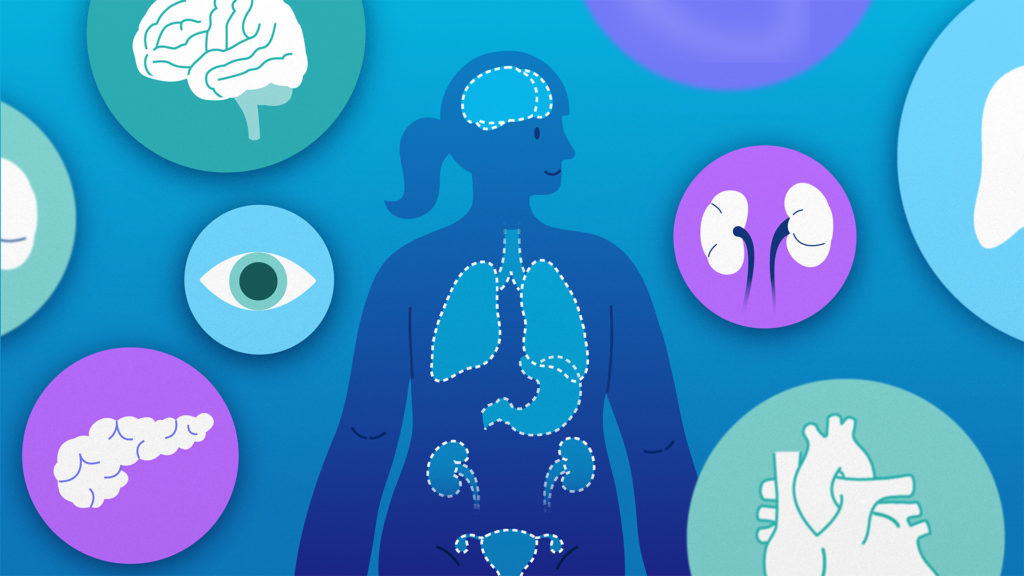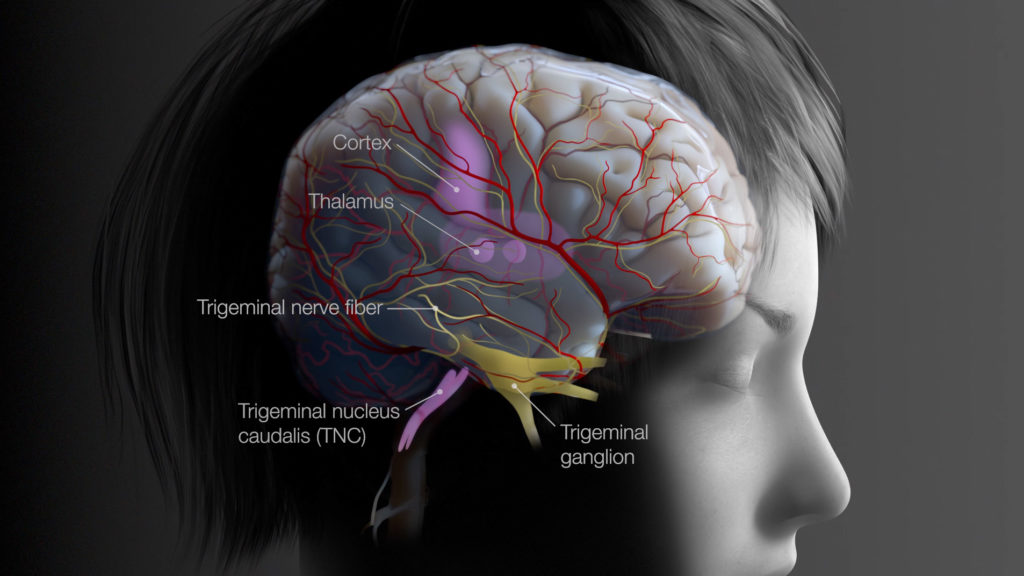What is medical illustration?
Some subjects are almost impossible to communicate using only words. Just imagine trying to assemble an IKEA bookcase without any diagrams in the instruction manual! As the saying goes, a picture is worth a thousand words and this is medical illustration’s greatest strength.
Medical illustration is the marriage of science and art. It involves transforming reams of dense scientific data into visuals that clearly and succinctly explain challenging concepts. A single image can summarize a complex physiological process that might otherwise require paragraphs of text to describe.
Medical illustration isn’t just limited to static images either. Animations, sculptures, websites, games, and interactive experiences are just some of the options in a medical illustrator’s toolkit.
This medical illustration was created to help explain the brain pathways involved in self control. The power of medical illustration to communicate lies in its ability to show rather than tell, and in people’s innate capacity for visual learning.
What does a medical illustrator do?
A popular theory suggests that people are ruled by either the left side or the right side of their brain. Left-brain thinkers are considered logical and analytical while right-brain thinkers are more creative and artistic. Whether or not that’s true, medical illustrators tap into both sides of their brain, combining the best of both worlds.
Digital drawing tablets enable medical illustrators to draw directly on the computer. Nonetheless, fundamental drawing skills are still central to the practice of medical illustration. Digital tools enhance medical illustration workflows, but are not a substitute for artistry, skill and knowledge of medical science and biology.
Medical illustrators are visual problem solvers, striking a balance between accuracy and artistic vision. Primarily educators, they are unique in their ability to distill complex information into visual narratives that are easy to understand.
Medical illustrators create their work based on the latest scientific data and literature to ensure accuracy. Since they work closely with doctors and researchers, they speak the same scientific language. Crucially, they know how to translate the experts’ knowledge into visuals that resonate with the intended audience.
This image is from an interactive continuing medical education (CME) activity on canine epidural placement created for veterinarians. Compare the level of detail with that of the image below, which was designed for Alzheimer’s patients and their caregivers.
Medical jargon can be overwhelming and different audiences require varying levels of detail. A patient looking through a drug pamphlet doesn’t need a crash course in advanced immunology. Conversely, their doctor already understands the basics; they’re eager for a deep dive into the material. A medical illustrator will tailor the visuals for the target audience. By removing unnecessary details, they can hone in on key messages and deliver information in easy-to-digest chunks.
This image is from a medical animation created to educate Alzheimer’s patients and their caregivers on a lumbar puncture procedure. Compare the level of detail with that of the image above, which was designed for veterinarians.
Effective educational visuals are both didactic and visually appealing. Medical illustrators harness their design expertise to enhance communication. Colour may be used judiciously to guide the viewers’ gaze or to establish colour coding. While deliberate lighting and a well-planned layout are pleasing to the eye, they also help to emphasize key messages.
This illustration of sodium and potassium channels in a cell membrane makes judicious use of colour to direct viewer attention and connect elements in the image: sodium ions with the sodium channel and potassium ions with the potassium channel. Lighting and depth-of- field help add emphasis to the important elements.
What kind of training does a medical illustrator need?
Medical illustrators have specialized training in both the life sciences and visual communication. The majority have a master’s degree from an accredited graduate program in medical illustration. There are currently five programs in North America, including one in Canada. Additionally, some medical illustrators are board-certified. Certification measures professional competency in biomedical science, technical and artistic skill, and ethics. At AXS Studio, every project is assigned one of our five in-house CMIs to ensure scientific accuracy.
Accredited graduate medical illustration programs include surgical illustration training. Candidates research, observe, and document surgical procedures in hospital operating rooms. They then prepare sequential surgical illustrations that are evaluated by the sponsoring surgeon and often published in journals and medical textbooks. ©2004 Margot Mackay. Used with permission.
While each graduate program has different strengths and curricula, they all include courses in science (e.g., anatomy, embryology, pathology) and applied art (e.g., surgical illustration, data visualization). In addition to traditional art, students learn the latest illustration, animation and interactive technology. Many medical illustrators use advanced digital illustration and 3D animation software. Others specialize in web design, data visualization, and interactive programming.
Where does a medical illustrator work?
Medical illustrators may work independently or as part of a larger creative team. Some work directly with physicians and scientists in hospitals, medical schools, pharmaceutical companies, or research institutions. Some may even co-author textbooks and articles for peer-reviewed journals. Other medical illustrators work with publishers, law firms, and advertising agencies.
Given the diversity of the field, many medical illustrators choose to become specialists. Some focus on specific subjects, like surgery, ophthalmology, or veterinary medicine. Others specialize in specific media, becoming experts in animation, app development, or prosthetic design. Still others focus on specific markets, including publishing or medical legal work.
Where are medical illustrations used?
Medical illustrations are designed to educate healthcare professionals, patients, and the general public—but their impact goes far beyond textbooks. Infographics provide support for articles in scientific journals and newspapers. Pharmaceutical companies use medical visuals to communicate how a drug works. Patient education materials like Let’s Chat CAR T and About PTLD rely on medical illustration to help individuals make informed decisions about their health. Even the warning labels on cigarettes may feature medical illustrations.
This medical illustration was designed for use in news releases. It was part of a campaign to educate the general public on the underlying causes of cystic fibrosis.
In personal injury and medical malpractice cases, lawyers use medical illustrations to clarify complex information for the judge and jury. Those physical 3D models you see in your doctor’s office? That’s the work of a medical illustrator. Startup medical device companies may use visuals to explain the science behind their designs to potential investors. Medical illustration even pops up in forensics, commercials, museum exhibits, movies and television.
What are the advantages of using medical illustration?
A common question heard by medical illustrators is “why not just take a photo?” Imagine being in the operating room, watching an abdominal surgery. Even if you’re not squeamish at the sight of blood, the surgical field is very small and disorienting. Not only are the surgeon’s hands blocking your view, everything inside the body is varying shades of pink and orange. This makes it difficult to identify anatomical landmarks or distinguish between different organs and vessels.
Both images above illustrate the same step in robotic inguinal hernia repair. Medical illustration can make it easier for lay viewers to understand a surgical procedure than video. Comprehending the surgical field and quick movements in a surgical video requires medical training and experience. The illustration above is a still from a medical animation by AXS Studio (© 2025 Intuitive Surgical. Used with permission).The video (© 2020 David Lourié) was created by Dr. David Lourié and shared on his YouTube channel.
Medical illustrators omit distracting details, like blood or the surgeon’s hands, to improve visibility. Shifting the angle of view can better orient the viewer, while labels and callout insets provide further context. The deliberate use of colour can highlight key steps and tiny details that might be overlooked in a real-world setting.
Even if radiological images or histological slides are available, not everyone understands how to interpret them. Medical illustrators help bridge this knowledge gap. For example, an illustration of a fractured leg is easily understood by all audiences, unlike a series of CT scans.
Another important point to consider: many processes in the body are invisible to the naked eye. Even the most advanced microscopes cannot detect sub-cellular processes. Medical illustrators reveal what is normally invisible, providing useful visual references for education and marketing.
This medical illustration shows processes occurring at cellular and molecular levels that would otherwise be difficult, if not impossible, to visualize with microscopy. Illustration also has the power to show events happening across various timespans in a single image.
Complex scientific concepts can be simplified by medical illustrators and efficiently communicated, to improve comprehension and retention. Medical illustrations also provide flexibility. If one physiological pathway needs extra emphasis, the visual design can direct attention to that area. Any human figures can easily be made inclusive and adjusted to represent all genders, ages, and racial backgrounds. Sensitive content can be handled with care, to avoid possible triggers. Medical illustrators can even help overcome language barriers, by using shared visual motifs to communicate information and improve health literacy.
Can AI replace medical illustrators?
An inaccurate knee joint anatomy image generated by DALL-E 3 artificial intelligence software.
Maybe one day but not yet! Accuracy is incredibly important in medical illustration and current AI engines are still no substitute for the trained eye of a medical illustrator. Issues like extra bones in a skeleton, missing vital organs, imaginary anatomy, a DNA helix twisting in the wrong direction, and so on. These are just some of the errors seen in AI-generated medical visuals. Robot overlords may eventually take over the world but for now, AI serves as a tool to help medical illustrators work more efficiently, rather than a replacement.



